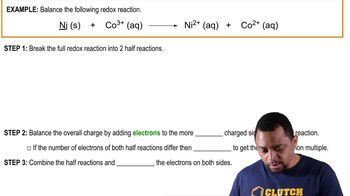Consider an ion with the symbol X2+ formed from a representative element.
d. What is the formula of the compound formed from X and the nitride ion?
 Verified step by step guidance
Verified step by step guidance Verified video answer for a similar problem:
Verified video answer for a similar problem:



 1:46m
1:46mMaster Writing Formula Units of Ionic Compounds Concept 1 with a bite sized video explanation from Jules
Start learning